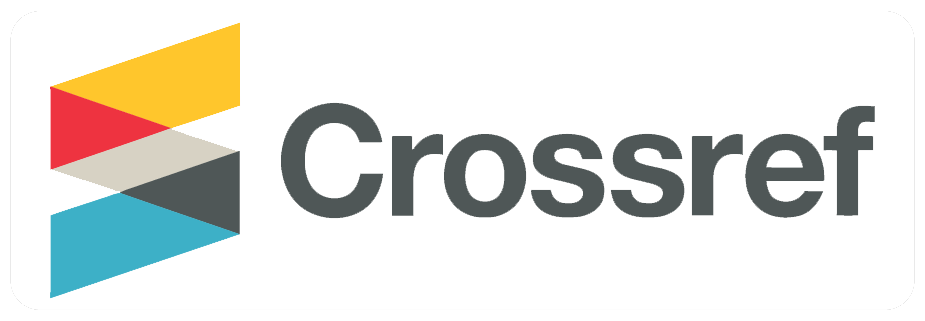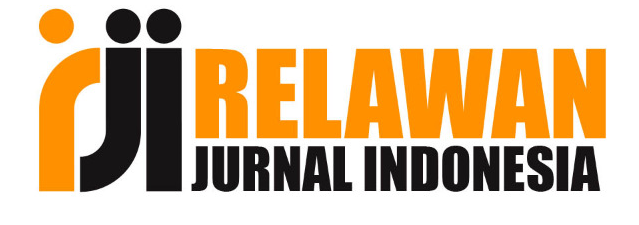Model Hybrid Menggunakan Dekomposisi-Neural Network Untuk Data Indeks Harga Saham Gabungan
DOI:
https://doi.org/10.36982/jiig.v13i3.2696Abstrak
Â
The development of Covid-19 has worsened the economy not only nationally but also globally. Since its spread, the price movement of the Jakarta Composite Index (IHSG) has continued to be volatile. JCI price volatility shows risk and uncertainty in investing. Volatility is used as a barometer to determine portfolio management strategies for financial actors. Therefore, financial actors should find a strategy to be able to predict JCI price movements to reduce risks and gain profits. One way that can be done is to predict the JCI price as a reference in investing. This study uses a hybrid model between the decomposition model and the Neural Network (NN) in predicting JCI price volatility. The decomposition uses two approaches, namely additive and multiplicative, the two approaches will then be combined with NN and the NN algorithm used is Feed Forward Neural Network (FFNN) where the results of the decomposition in the form of seasonal, trend, and random data are used as input in the FFNN architecture. The FFNN architecture in this study differs from the hidden layer nodes and the epochs used. Furthermore, the prediction results from the model are compared with a single NN. The performance of each architecture will be measured using the Mean Absolute Error (MAE) and Mean Square Error (MSE). The results show that the hidden layer with more nodes can provide good performance while the epoch used provides good performance depending on the learning process carried out. The prediction results using the hybrid model can outperform the performance of a single NN.
Keywords : time series, volatilitas, studi perbandingan, kecerdasan buatan, statistik.
Referensi
Ahmad, E., Stern, N., & Xie, C. (2020). From rescue to recovery: towards a post-pandemic sustainable transition for China. … ://Cdrf. Org. Cn/Jjh/Pdf/Towards a Post-Pandemic …, June, 1–28.
Ahmad, T. (2022). Pertumbuhan Ekonomi Indonesia di Masa Pandemi Cenderung Negatif. Muttaqien, 3(1), 67–77.
Andhika Viadinugroho, R. A., & Rosadi, D. (2021). Long Short-Term Memory Neural Network Model for Time Series Forecasting: Case Study of Forecasting IHSG during Covid-19 Outbreak. Journal of Physics: Conference Series, 1863(1). https://doi.org/10.1088/1742-6596/1863/1/012016
Chen, Q., & Robert, C.-Y. (2022). Multivariate Realized Volatility Forecasting with Graph Neural Network. In 3rd ACM International Conference on AI in Finance (ICAIF ’22), November 2â•ï¬4, 2022, New York, NY, USA (Vol. 1, Issue 1). Association for Computing Machinery. https://doi.org/10.1145/3533271.3561663
Chen, Y., Zhao, P., Zhang, Z., Bai, J., & Guo, Y. (2022). A Stock Price Forecasting Model Integrating Complementary Ensemble Empirical Mode Decomposition and Independent Component Analysis. International Journal of Computational Intelligence Systems, 15(1). https://doi.org/10.1007/s44196-022-00140-2
Chhajer, P., Shah, M., & Kshirsagar, A. (2022). The applications of artificial neural networks, support vector machines, and long–short term memory for stock market prediction. Decision Analytics Journal, 2(June 2021), 100015. https://doi.org/10.1016/j.dajour.2021.100015
Chowdhury, E. K., Dhar, B. K., & Stasi, A. (2022). Volatility of the US stock market and business strategy during COVID-19. Business Strategy and Development, April. https://doi.org/10.1002/bsd2.203
Christianti, A. (2018). Volatility Shock Persistence in Investment Decision Making: a Comparison Between the Consumer Goods and Property-Real Estate Sectors of the Indonesian Capital Market. Journal of Indonesian Economy and Business. https://doi.org/10.22146/jieb.23225
Gao, X., Ren, Y., & Umar, M. (2022). To what extent does COVID-19 drive stock market volatility? A comparison between the U.S. and China. Economic Research-Ekonomska Istrazivanja , 35(1), 1686–1706. https://doi.org/10.1080/1331677X.2021.1906730
Ge, W., Lalbakhsh, P., Isai, L., Lenskiy, A., & Suominen, H. (2022). Neural Network – Based Financial Volatility Forecasting : 55(1), 1–30.
Godahewa, R., Bandara, K., Webb, G. I., Smyl, S., & Bergmeir, C. (2021). Ensembles of localised models for time series forecasting. Knowledge-Based Systems, 233. https://doi.org/10.1016/j.knosys.2021.107518
google berita. (n.d.). Virus Corona (Covid-19). Google Berita.
Gunawan, D., & Astika, W. (2022). The Autoregressive Integrated Moving Average (ARIMA) Model for Predicting Jakarta Composite Index. Jurnal Informatika Ekonomi Bisnis, 4(January 2020), 2–7. https://doi.org/10.37034/infeb.v4i1.114
Hanoatubun, S. (2020). Dampak Pandemi COVID-19 terhadap Perekonomian Indonesia [Impact of the COVID-19 Pandemic on the Indonesian Economy]. Journal of Education, Psychology and Counseling, 2(1), 212. https://doi.org/10.31289/agri.v4i2.8247
Heng, S. Y., Ridwan, W. M., Kumar, P., Ahmed, A. N., Fai, C. M., Birima, A. H., & El-Shafie, A. (2022). Artificial neural network model with different backpropagation algorithms and meteorological data for solar radiation prediction. Scientific Reports, 12(1), 1–18. https://doi.org/10.1038/s41598-022-13532-3
Heryati, A., & Herdiansyah, M. I. (2020). The Application of Data Mining by using K-Means Clustering Method in Determining New Students’ Admission Promotion Strategy. International Journal of Engineering and Advanced Technology, 9(3), 824–833. https://doi.org/10.35940/ijeat.c5414.029320
Heryati, A., Martadinata, A. T., & Syahputra, R. (2021). Penerapan Metode Simple Additive Weighting (Saw) Pada Sistem Pendukung Keputusan Penentuan Penerimaan Dosen Baru. JUSIM (Jurnal Sistem Informasi Musirawas), 6(1), 80–90. https://doi.org/10.32767/jusim.v6i1.1212
Heryati, A., Menzata Z, R. A., & Afriyani, F. (2019). The impact of Occupational Health and Safety (OHS) training and compensation on employees’ performance. Test Engineering and Management, 81(11–12), 3486–3492.
İltüzer, Z. (2022). Option pricing with neural networks vs. Black-Scholes under different volatility forecasting approaches for BIST 30 index options. Borsa Istanbul Review, 22(4), 725–742. https://doi.org/10.1016/j.bir.2021.12.001
Insmanthono, H. W. (2003). Kamus Istilah Ekonomi Populer (Cyprianus Louis Noviatno (ed.)). Kompas.
Kumar, G., Singh, U. P., & Jain, S. (2022). An adaptive particle swarm optimization-based hybrid long short-term memory model for stock price time series forecasting. Soft Computing, 26(22), 12115–12135. https://doi.org/10.1007/s00500-022-07451-8
Lee, J., & Cho, Y. (2022). National-scale electricity peak load forecasting: Traditional, machine learning, or hybrid model? Energy, 239, 1–42. https://doi.org/10.1016/j.energy.2021.122366
Li, W., Chien, F., Kamran, H. W., Aldeehani, T. M., Sadiq, M., Nguyen, V. C., & Taghizadeh-Hesary, F. (2022). The nexus between COVID-19 fear and stock market volatility. Economic Research-Ekonomska Istrazivanja , 35(1), 1765–1785. https://doi.org/10.1080/1331677X.2021.1914125
Li, Z., Farmanesh, P., Kirikkaleli, D., & Itani, R. (2022). A comparative analysis of COVID-19 and global financial crises: evidence from US economy. Economic Research-Ekonomska Istrazivanja , 35(1), 2427–2441. https://doi.org/10.1080/1331677X.2021.1952640
Mbuli, N., Mathonsi, M., Seitshiro, M., & Pretorius, J. H. C. (2020). Decomposition forecasting methods: A review of applications in power systems. Energy Reports, 6(2020), 298–306. https://doi.org/10.1016/j.egyr.2020.11.238
Meng, A., Ge, J., Yin, H., & Chen, S. (2016). Wind speed forecasting based on wavelet packet decomposition and artificial neural networks trained by crisscross optimization algorithm. Energy Conversion and Management, 114, 75–88. https://doi.org/10.1016/j.enconman.2016.02.013
Moslehpour, M., Al-Fadly, A., Ehsanullah, S., Chong, K. W., Xuyen, N. T. M., & Tan, L. P. (2022). Assessing Financial Risk Spillover and Panic Impact of Covid-19 on European and Vietnam Stock market. Environmental Science and Pollution Research, 29(19), 28226–28240. https://doi.org/10.1007/s11356-021-18170-2
Poon, S. H., & Granger, C. (2005). Practical issues in forecasting volatility. Financial Analysts Journal, 61(1), 45–56. https://doi.org/10.2469/faj.v61.n1.2683
Poon, S. H., & Granger, C. W. J. (2003). Forecasting volatility in financial markets: A review. Journal of Economic Literature, 41(2), 478–539. https://doi.org/10.1257/jel.41.2.478
Robiyanto, R. (2018). the Effect of Gold Price Changes, Usd/Idr Exchange Rate Changes and Bank Indonesia (Bi) Rate on Jakarta Composite Index (Jci)’S Return and Jakarta Islamic Index (Jii)’S Return. Jurnal Manajemen Dan Kewirausahaan, 20(1), 45. https://doi.org/10.9744/jmk.20.1.45-52
Rubi, M. A., Chowdhury, S., Rahman, A. A. A., Meero, A., Zayed, N. M., & Anwarul Islam, K. M. (2022). Fitting Multi-Layer Feed Forward Neural Network and Autoregressive Integrated Moving Average for Dhaka Stock Exchange Price Predicting. Emerging Science Journal, 6(5), 1046–1061. https://doi.org/10.28991/ESJ-2022-06-05-09
Saluza, I., & Anggraini, L. D. (2022). BPNN ’ s Empirical Analysis of Daily Rupiah Exchange Rate Volatility Utilizing. JURNAL AKSI Akuntansi Dan Sistem Informasi, 7(1), 41–51.
Sheela, K. G., & Deepa, S. N. (2014). Selection of number of hidden neurons in neural networks in renewable energy systems. Journal of Scientific and Industrial Research, 73(10), 686–688.
Tjandrasa, B. B., & Sutjiati, R. (2016). Effect of World Gold Price, Crude Oil Price and Interest Rate to Jakarta Composite Index. International Journal of Education and Research, 4(7), 215–222.
Wang, J., & Hu, J. (2015). A robust combination approach for short-term wind speed forecasting and analysis - Combination of the ARIMA (Autoregressive Integrated Moving Average), ELM (Extreme Learning Machine), SVM (Support Vector Machine) and LSSVM (Least Square SVM) forecasts usi. Energy, 93, 41–56. https://doi.org/10.1016/j.energy.2015.08.045
Yun, P., Huang, X., Wu, Y., & Yang, X. (2022). Forecasting carbon dioxide emission price using a novel mode decomposition machine learning hybrid model of CEEMDAN-LSTM. Energy Science and Engineering, April. https://doi.org/10.1002/ese3.1304
Unduhan
Diterbitkan
Cara Mengutip
Terbitan
Bagian
Lisensi

This work is licensed under a Creative Commons Attribution-ShareAlike 4.0 International License.











